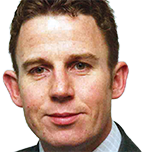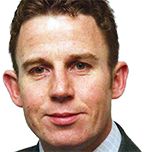An unexpected tax bill for older people
Thousands of older people who had filled in self-assessment tax returns may not have realised they had a bill to pay.


Thousands of older people who have just completed self-assessment tax returns in time for the 31 January deadline may have been surprised and disappointed to discover they had a bill to pay. That's because while private pensions are generally taxed at source, the tax system often fails to ensure you pay the right amount of tax if you have more than one.
All pension income is potentially taxable, with older people qualifying for the same amount of personal allowance currently £11,000 as everyone else. If you have a private pension and state pension benefits, tax will normally be deducted from the former, with HM Revenue & Customs (HMRC) giving the provider a tax code that accounts for both the latter and your personal allowance.
However, many people receive an income from several private pensions. In theory, HMRC should send each provider a tax code that reflects the total income you have coming in, so that the right amount of tax is deducted at source. In practice, this doesn't always happen in the right way, whether due to an HMRC error or because you haven't notified them of an additional pension income.
MoneyWeek
Subscribe to MoneyWeek today and get your first six magazine issues absolutely FREE

Sign up to Money Morning
Don't miss the latest investment and personal finances news, market analysis, plus money-saving tips with our free twice-daily newsletter
Don't miss the latest investment and personal finances news, market analysis, plus money-saving tips with our free twice-daily newsletter
The most common problem is that a personal allowance gets allocated to more than one of your private pensions, meaning you get paid more untaxed income than you should. Another pitfall is that additional pension income takes you into a higher tax bracket, but since the pensions are only being considered individually, you pay only basic-rate tax on all income. These problems may only emerge when you're submitting your self-assessment tax return, leaving you with an unexpected bill. And for older people not covered by self-assessment, such errors can go unnoticed for a long time.
It's therefore important to check the tax codes on all of your private pensions. HMRC should treat one of these as your main income, on which you should get your personal allowance (the tax code on this will typically start with the letters KT). On your other pensions, where you're not entitled to an additional allowance, your tax code should generally be BR, DO or D1. If in doubt, call HMRC (0300-200 3300) for advice.
Allowance cut looms for retirees
Savers over the age of 55 could be in for a nasty tax shock this year if they take advantage of pensions freedom rules that give people the right to start drawing an income from their savings even if they're continuing to work.
From April, new rules will limit the amount you may contribute to a pension scheme once you've started drawing benefits from it to just £4,000 a year from April 2017, against the current limit of £10,000. (This is known as the money purchase annual allowance, or MPAA.) If you're still paying into a workplace scheme, or a private pension plan, but you have begun to take an income, any tax relief granted on new contributions above the £4,000 cap may have to be repaid.
The rules are designed to curtail a loophole in the system under which savers could withdraw money from their pension schemes once they reach age 55 and then put it straight back in again to benefit from the tax relief available on pension contributions. However, it is likely that many savers are not aware that the rules are about to change and may be caught out, even where they are pursuing a long-term financial planning strategy rather than trying to make a quick return. Those who had planned to increase their pension funding as they neared the end of their careers will be particularly affected by the new rules.
The good news is that it may still be possible to avoid the cap while taking some benefits from your pensions. The new system does not apply to savers who take only their 25% tax-free cash entitlement, or free up small pension pots of £10,000 or less, or who buy lifetime annuities. However, payments from income-drawdown schemes are covered by the rules.
In the news this week
The rules that banned independent financial advisers (IFAs) from receiving commission from investment companies were supposed to make fees more transparent, says Rosie Taylor in The Daily Telegraph. However, it turns out that many IFAs started telling clients that it was "easier" to pay for advice via a small percentage charge on upfront investments, followed by an on-going annual percentage charge. This can have a "devastating" impact on savings. The upfront cost of these "facilitated payments" (where fees are taken from the investment rather than paid directly by the client to the IFA) is typically 3%, followed by ongoing annual management charges of 0.5%.
As the investment (hopefully) grows, this 0.5% can cause a major dent in returns. If, say, on a £100,000 investment, a client paid an upfront £3,000 for advice, and handed over a £500 cheque every year for ongoing advice, over 30 years, their savings would typically have grown to £530,000. Over this period, they would have paid £18,000 in fees. If, on the other hand, the payment was "facilitated", then the investment would grow to just £451,000, leaving the client £61,000 worse off.
A 1% exit penalty cap on pensions will come into force on 31 March, designed to help savers who want to move their pension fund to a new provider when they reach the age of 55, says Ali Hussain in The Sunday Times. Pensions freedom rules allow almost anyone aged 55 and over to withdraw their savings to invest or spend as they wish, but exit charges of as much as 6% proved a barrier for many savers. Scottish Life and LV have both scrapped exit fees altogether and other big names are adopting the cap.
One company, however, is resisting and breaks no rules by doing so: St James's Place (SJP) is continuing to charge an "early withdrawal charge" of up to 6% if you leave within six years, although it insists that this is not an exit fee.
As of 30 January, the Financial Services Compensation Scheme (FSCS) protection level has been pushed back to its pre-July 2015 level of £85,000 per person, per institution, says Kevin Peachey on the BBC website. Joint accounts are protected up to £170,000.
Get the latest financial news, insights and expert analysis from our award-winning MoneyWeek team, to help you understand what really matters when it comes to your finances.

David Prosser is a regular MoneyWeek columnist, writing on small business and entrepreneurship, as well as pensions and other forms of tax-efficient savings and investments. David has been a financial journalist for almost 30 years, specialising initially in personal finance, and then in broader business coverage. He has worked for national newspaper groups including The Financial Times, The Guardian and Observer, Express Newspapers and, most recently, The Independent, where he served for more than three years as business editor.
-
 How cancelling unused direct debits could boost your pension by £37,000
How cancelling unused direct debits could boost your pension by £37,000A new year refresh of your spending could save you money and help boost your pension pot.
-
 NS&I cuts interest rates on 8 savings accounts
NS&I cuts interest rates on 8 savings accountsNS&I will now offer less attractive interest rates for customers wishing to lock their savings away to grow for one, two, three or five years.